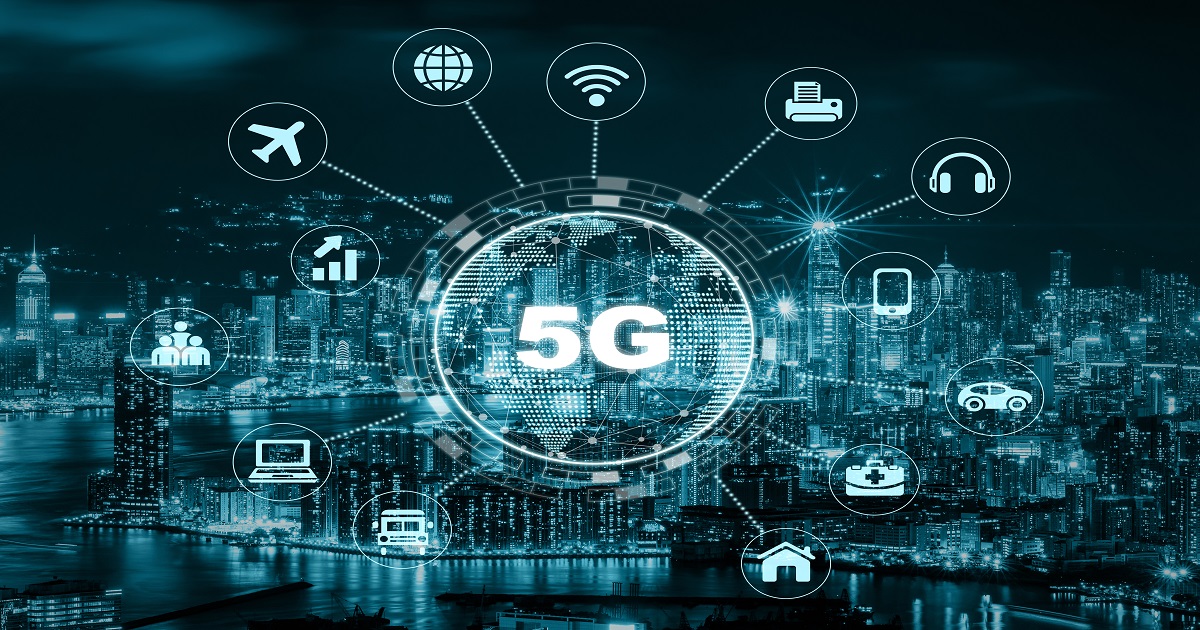
As 5G rolls out across the world, vertical industries across IoT are working on additional standards to make the technology suitable for their industries. Manfred Lindacher, the vice president of global sales for the international automotive market at Quectel Wireless Solutions, explains why industries are racing to adopt sector-specific standards that support 5G for IoT.
Looking over the entire IoT landscape, it’s clear that vertical industries are currently defining additional standards, exceptions and use cases to make 5G suitable and compliant for use in their sectors. The capabilities of IoT, enabled by the low latency, high bandwidth 5G, are transforming traditional business practices and processes but in sensitive industries, like healthcare, compliance with sector-specific regulations and secure interoperability will be a necessity.
In the automotive market, for example, standardization is happening in the 5G Automotive Association which is supported by car manufacturers, tier one automotive suppliers, chipset-makers and infrastructure companies. In addition, the effort is supported by mobile network operators and modem makers who are contributing their expertise based on automotive use cases. The focus is not only on 5G technology, but also on the cellular V2X (C-V2X) standard, which is mainly automotive-related.
5G roll-out is underway in a growing number of markets worldwide and, without doubt, this will make the decision to select the technology easier. This is important because 5G is not the only technology available. Organizations can choose from connectivity options including LTE-Advanced and GNSS solutions that can offer many – but not all - of the attributes of 5G. The lack of ubiquitous coverage coupled with lack of clarity is causing delay to formulation of industry-specific standards and this, in turn is set to slow adoption of 5G for IoT applications.
It’s not only individual industries’ standards processes that cause delay. From a technology perspective, the cellular standards themselves have become more and more demanding to implement as the mobile generations have proceeded. If we look back to the 2G standard, antennas had to support – depending on the geographical market – just two frequency bands, 900 megahertz (MHz) and 1800MHz or 850MHz and 1900MHz. With 5G, we’re now talking about several spectrum bands below 6 gigahertz (GHz), which might be extended, when organizations start to use millimetre-wave technology for stationary use. Greater clarity is coming. China has made a clear statement regarding automotive industry standardization so there is no doubt the country will engage in the C-V2X technology but, if you look into the other big markets, things look different. In the US, there is still spectrum reserved for DSRC, while the European Union had released a clear recommendation for C-V2X before changing its position to neutral the following day. Therefore, it is difficult for the whole automotive industry to take long-term decisions because there is still uncertainty in various markets regarding standards adoption.
The need for technical certainty is multi-layered and varies from industry to industry depending on whether services and devices are globally-deployed or if they are expected to have a long deployment lifecycle. Cars operate for 10-20 years and smart meters may be in use for more than 20 years, while other equipment is only expected to operate for a few years. This increases the risks for decision-makers of selecting a technology that will not be relevant in ten years. Organizations are therefore looking to standardization to provide an assured roadmap from which they can determine the likely lifespan of a technology and understand its applicability to their IoT use cases.
For example, advanced driver assistance system (ADAS) above level 4, where the car takes over the control completely and it’s a ‘mind off’ situation for the driver, require large amounts of real-time data. For these robo-cars, it’s not only about the greater bandwidth, it’s the lower latency of 5G that is urgently required to enable these sorts of applications. The market recognises this hence the focus on 5G by organizations such as the 5G Automotive Association and its members.
There is an IoT ecosystem surrounding connected cars that can be exploited across many different vehicles and there is huge potential for all here. From our experience in other verticals and in IoT we have learned that IoT pioneers really value hands-on support to develop their IoT devices and deployment strategies. For many, 5G is a new and complex technology that places unique demands on the wider IoT solution.
Careful design and development of 5G-enabled smart devices is therefore a priority so we are able provide our experience across verticals and other wireless technologies to help simplify and accelerate customers’ developments. Success in automotive IoT demands the best support from the IoT ecosystem of chipset vendors, connectivity providers, application developers and component suppliers. The reality is that only large companies have the scale and global presence necessary to support industries, like automotive, that are shipping millions of connected products each year.
About the author: Manfred Lindacher is Vice President of Global Sales Automotive International at Quectel Wireless Solutions. In this role, he leads Quectel’s sales activities with automotive OEMs worldwide. He joined Quectel in 2019 following a career that has spanned IT, mobile and automotive businesses. Most recently, he served as product group sales director at Valeo with global responsibility for the sales and product strategy in its connected car group. Prior to Valeo, he worked in multiple roles at Peiker Acustic GmbH, a German specialist in telematics and connectivity solutions.





